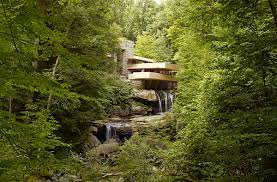Natural architecture is a design philosophy that seeks to harmonize human-made structures with the natural environment, often incorporating organic shapes, sustainable materials, and eco-friendly technologies. While there might not be a specific style or movement called “natural architecture” in the United States, there are certainly examples of architectural projects that prioritize sustainability and a close connection with nature. Here are a few notable examples and trends:
- Green Building Standards: The United States has seen a significant increase in green building practices over the years. Organizations like the U.S. Green Building Council (USGBC) have developed the LEED (Leadership in Energy and Environmental Design) certification system, which encourages sustainable building practices and the use of renewable materials.
- Frank Lloyd Wright’s Organic Architecture: Frank Lloyd Wright, one of America’s most famous architects, is known for his philosophy of organic architecture. He believed in designing buildings that blend seamlessly with their natural surroundings. Iconic examples include Fallingwater in Pennsylvania and Taliesin West in Arizona.
- Sustainable Design: Many architects and designers in the U.S. prioritize sustainability by incorporating features like green roofs, energy-efficient systems, and passive solar design into their projects. The Bullitt Center in Seattle, often called the “greenest commercial building in the world,” is a prime example of this approach.
- National Parks and Public Spaces: The United States is renowned for its national parks and protected natural areas. Architects and planners often work to create visitor centers, lodges, and facilities that minimize their environmental impact and blend in with the natural landscape. For instance, the visitor center at Zion National Park in Utah is designed to harmonize with its surroundings.
- Modern Eco-Friendly Homes: There’s a growing trend of designing modern homes in the U.S. that incorporate sustainable materials, energy-efficient systems, and a strong connection to nature. These homes often feature large windows, open floor plans, and outdoor living spaces to bring the outdoors in.
- Community and Urban Planning: Some cities in the U.S. are embracing natural architecture principles in urban planning. This includes creating green spaces, pedestrian-friendly areas, and sustainable infrastructure to improve the quality of life for residents while minimizing the impact on the environment.
While there may not be a single “natural architecture” movement in the U.S., architects and designers across the country continue to explore ways to create buildings and spaces that coexist harmoniously with the natural world, whether through sustainable practices, eco-friendly materials, or designs that take inspiration from nature.





